Guitar World Verdict
This is a lot of guitar, with plenty of potential: a grab-and-go axe that won’t break the bank. Game on!
Pros
- +
Simple, tidy build.
- +
Very much a Gretsch ‘Junior’.
- +
Excellent weight, feel and playability.
- +
Unusual but effective control layout and a pretty big sound!
- +
Bags of modding potential here, too.
Cons
- -
Not your archetypal Gretsch voice – but it’s hard to knock at this price.
You can trust Guitar World
As the entry point into the vast Gretsch guitar range, the Junior Jet Club is simplistic by design. Available in dual humbucker or, as here, in a slightly more expensive P-90/humbucker format, it also comes in a trio of colours with cream body binding and pickguard to match the covered neck single coil. It certainly recalls the style of the classic single-cut Jet models, Gretsch’s response to the Les Paul.
While the original Jet was a sealed semi-solid design, this G2215 is a solid slab-bodied affair. The body and neck are both nato, and although you’d expect the neck to be glued in, it’s a bolt-on – quite a rarity in Gretsch’s catalogue. Granted, that does scream budget, and, while that’s the point of the exercise, it also gives these Junior Jet Clubs a rather unique place in the range, not least in sound.
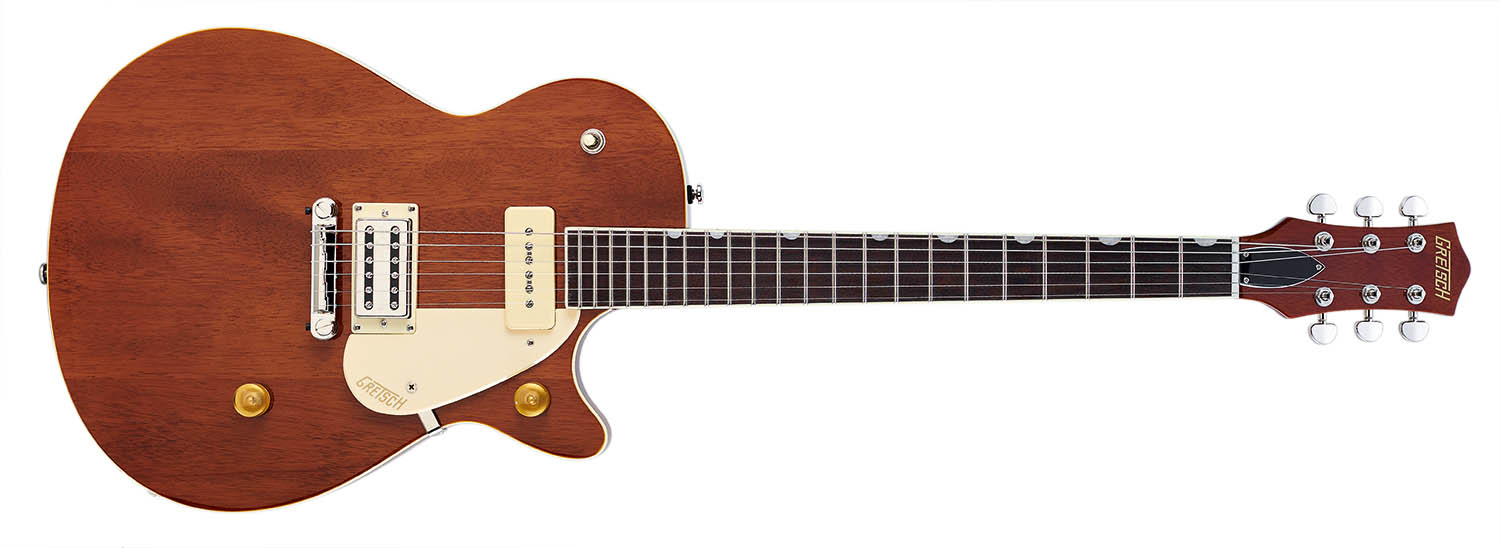
Despite the difference in constructional style, it retains obvious Gretsch DNA. The Jet outline is slightly longer and a little more squared than the Les Paul, yet somehow less rudimentary-looking than a Telecaster. Combine that with the classy, classic raked-back three-a-side headstock and the thumbnail fingerboard markers, and there’s no doubt you’re playing a Gretsch.
The stripped-down spec also removes a couple of the things that make Gretsch instruments sound and look like they do. The simple wrapover bridge means there’s a large expanse of top going begging for a Bigsby, and what on earth is going on with the controls? Well, the shoulder-placed pickup selector toggle does its usual thing.
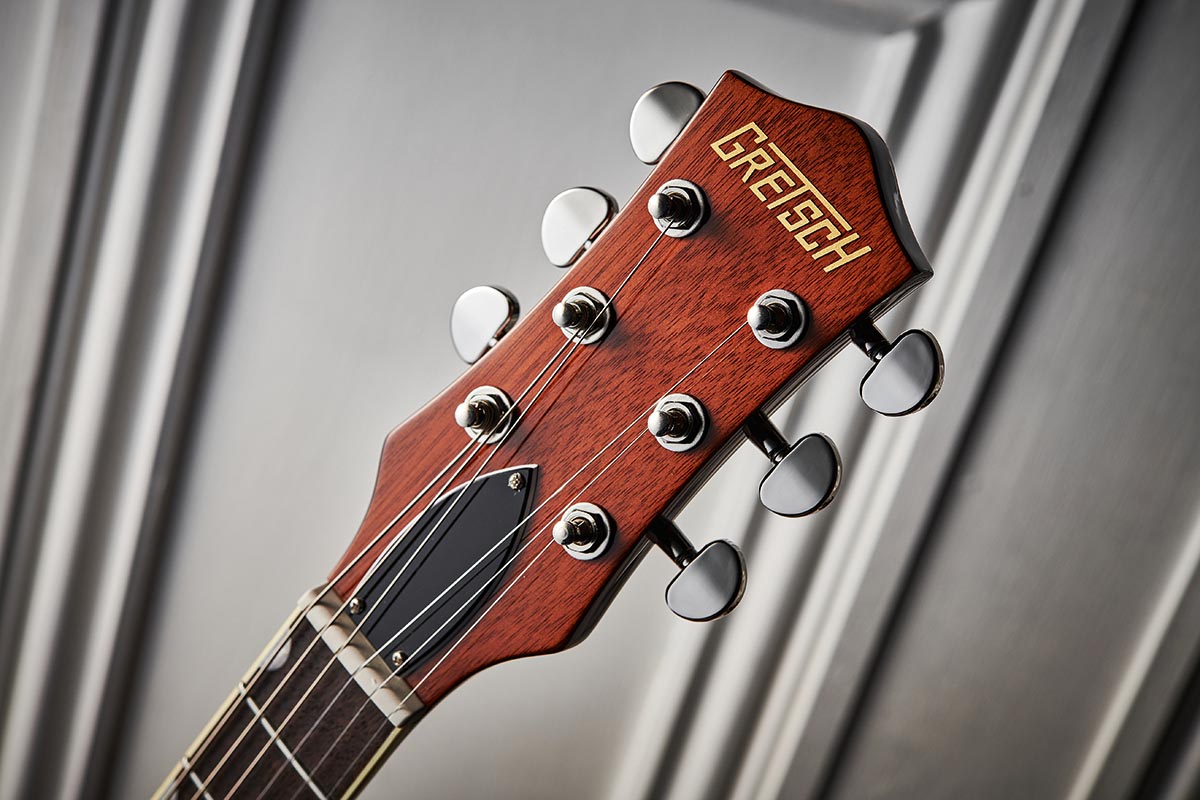
The control on the treble horn (typically a master volume) is simply the volume, which means that the single control located by the bridge (typically a volume) is actually a tone control.
That’s three separate circular cavities to cut with three recessed plastic covers, each held in place with three screws. Surely a single cavity with the three controls in would’ve been an easier and more cost effective proposition?
The neatly top-bound 45mm-thick slab body seems to be a four-piece spread, but the pieces are seamlessly joined and there’s actually a slightly coarse mahogany-like grain showing through the brown/tan-coloured translucent high-gloss poly finish.
The neck has a headstock splice under the 1st and 2nd frets, while the fingerboard material is laurel, almost generic rosewood-looking in colour with a flecked grain. The well-tended frets sit over the binding, and those thumbnail inlays (a grained pearloid) sit inside the binding. Simple it may be, but it’s a tidy build.
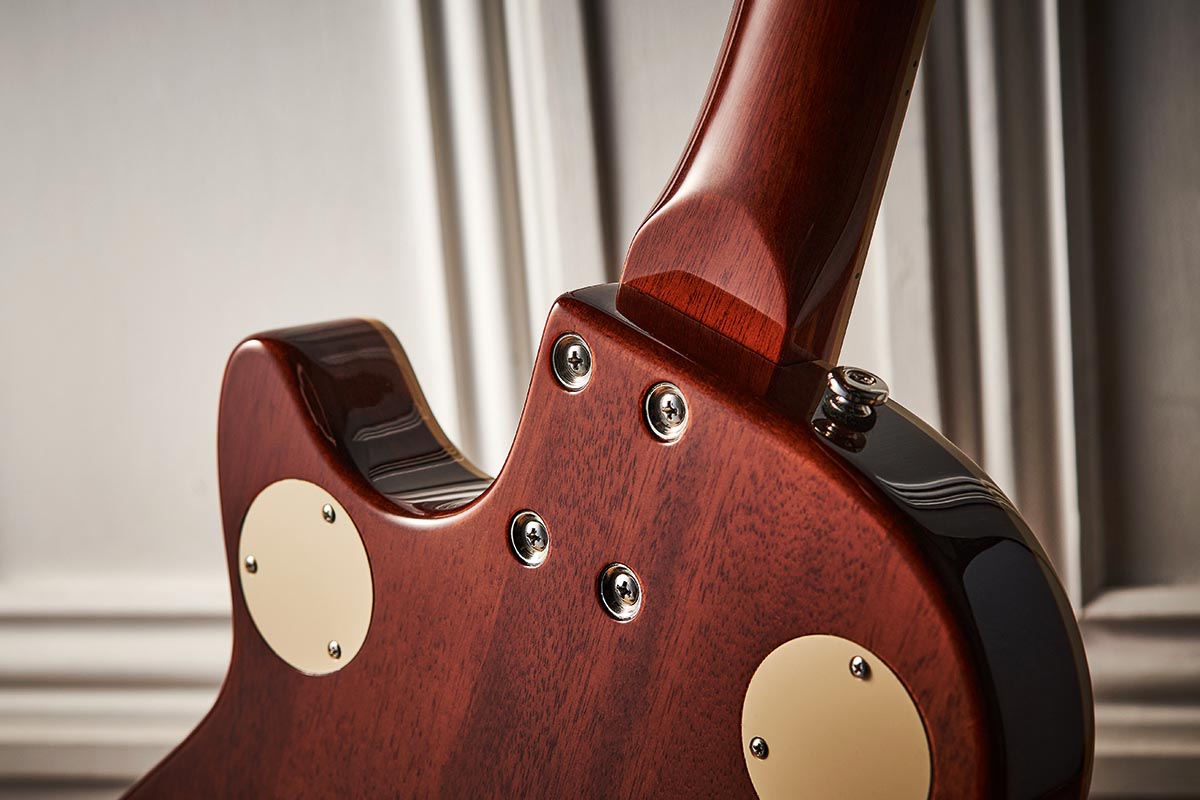
Feel & Sounds
With a good weight and well-balanced feel both strapped on and seated, comfortable is an accurate description, particularly with its Gibson-like 629mm (24.75-inch) scale length.
There are no surprises with the mainstream-feeling neck, which is 21.2mm deep at the 1st fret and 24.6mm by the 12th. It’s spec’d as a ‘Thin U’, but that seems a bit of a misnomer because, aside from a very slight flat to the back in the lower positions, the tapered shoulders give a more regular, classic C feel. Either way, it’s a perfectly good profile that feels far from ‘budget’; the medium gauge fretwire has good height and there’s a very lightly rounded edge to the neatly bound fingerboard.
Now, if you think you’re going to replicate classic Gretsch fare when you plug in, this Junior Jet Club should probably come with a warning: this is a no-Gretsch zone. As initially supplied, the P-90 is big and thick, with a big blues voice and a muscular slide sound, but the bridge pickup, obviously brighter, is thinner and a little quieter, too, with an almost generic ‘humbucker’ sound. It might not shout ‘Gretsch’, but it’s a perfectly good rootsy rock voice that laps up crunch and even heavier gained styles.
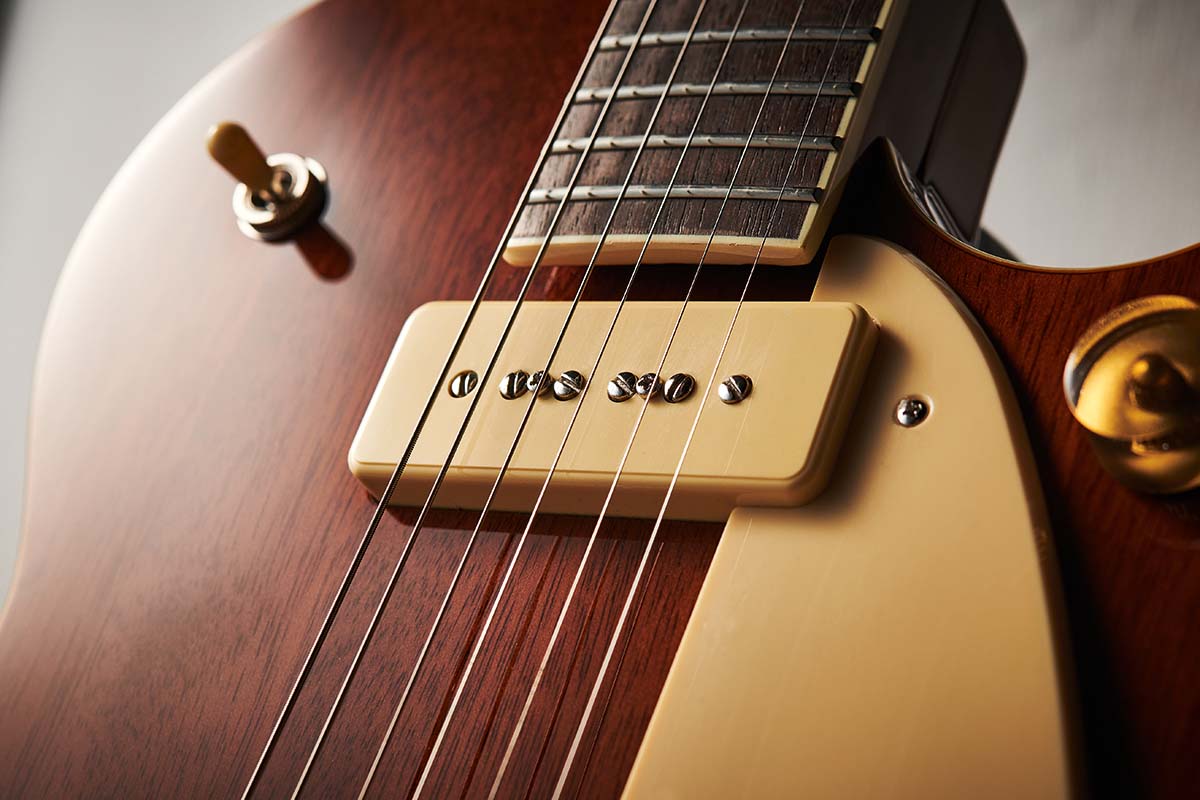
If you’re not averse to using the volume and tone, you’ll find quite a bit more here. The volume taper seems a little abrupt, but it noticeably thins out the sound – in a good way – and certainly gives a more typical Gretsch-y character.
The tone has a subtle effect, too, again thinning things out before it gets typically woofy, fully anti-clockwise. The apparent vintage wiring is doing its thing here with subtle interaction between the two controls for those of us who like some slight tone shifts and how they affect the front-end of your amp.
Finally, after lowering the neck pickup as described, that output discrepancy is removed and some ‘Gretsch’ is restored. Not only does the P-90 sound a little more single coil, less hot and bass heavy, the mix is rather good – bouncy and balanced.
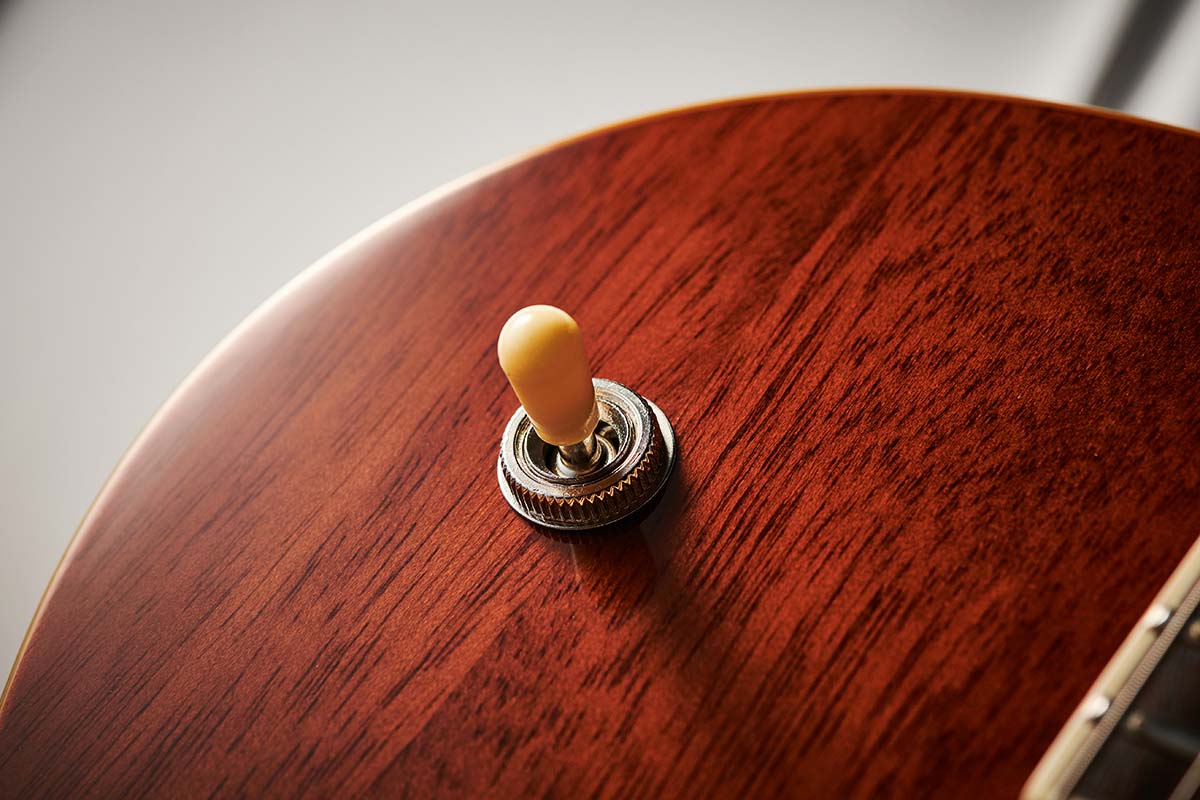
Verdict
We’re constantly surprised by the quality of ‘start-up’ guitars such as this. Gretsch was right there at the birth of rock ’n’ roll and often – like other heritage companies – seems to get pigeonholed and stuck in time with that slicked-back-hair rockabilly style. But there’s quite a Jekyll and Hyde character here.
As supplied with that pickup imbalance, the over-big-sounding neck pickup rather dwarfs the more classic-sounding bridge pickup, and it comes across as a bit of a roots-rock bruiser. But the rather unusual circuit means that if you’re happy to use the volume and tone, you can clean things up a little and evoke more of that 50s/60s vibe.
Remounting the neck pickup so we can lower it moves the guitar into a more conventional hum/P-90 style and restores some Gretsch, not least with the pretty cool pickup mix. It’s a lot of guitar, with plenty of potential: a grab-and-go axe that won’t break the bank. Game on!
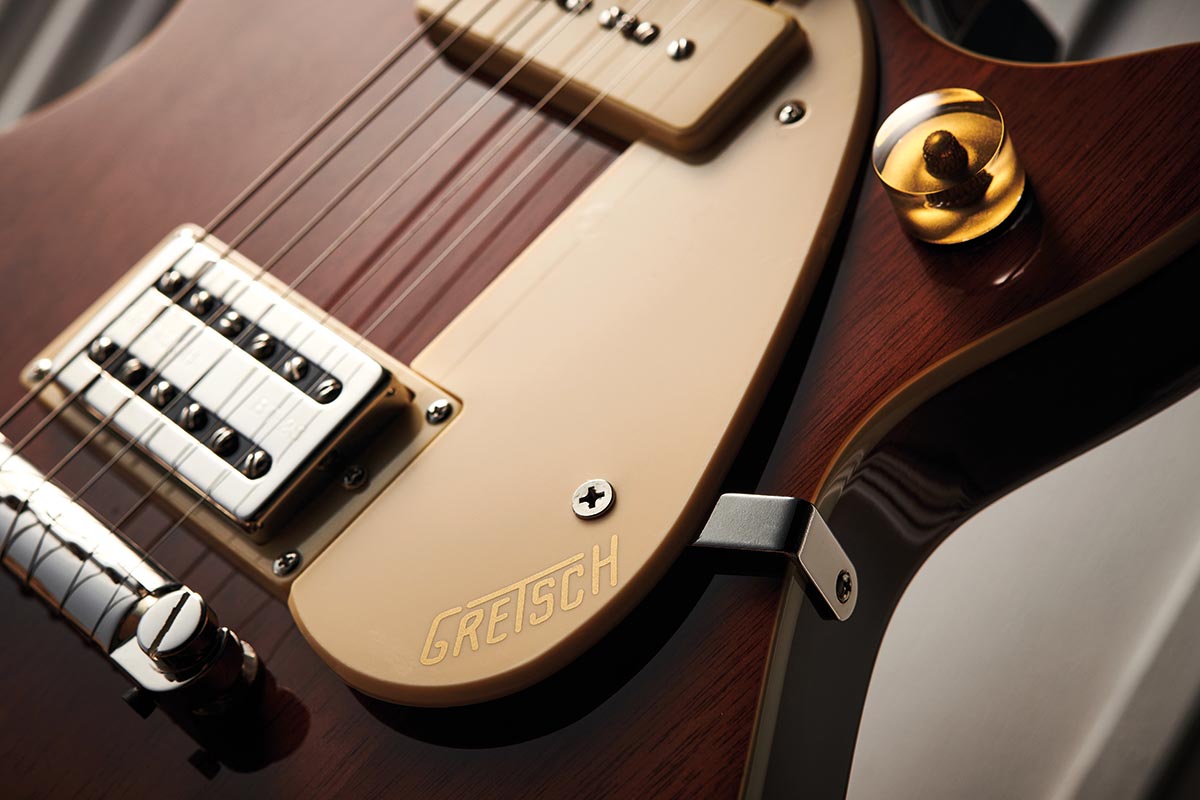
Specs
- PRICE: $349 / £370
- ORIGIN: Indonesia
- TYPE: Single-cutaway slab-body solidbody electric BODY: Nato
- NECK: Nato, ‘Thin U’ profile, bolt-on
- SCALE LENGTH: 629mm (24.75”)
- NUT/WIDTH: Synthetic/43.3mm FINGERBOARD: Bound laurel, pearloid ‘Neo-Classic Thumbnail’ inlays, 305mm (12”) radius
- FRETS: 22, medium jumbo
- HARDWARE: Anchored Compensated Wrap-Around Bridge/tailpiece, die-cast tuners – chrome-plated STRING SPACING, BRIDGE: 52.5mm ELECTRICS: Gretsch Broad’Tron BT-2S humbucker (bridge), P90 Soap Bar single coil (neck), 3-way toggle pickup selector switch, master volume and tone controls
- WEIGHT (kg/lb): 3.53/7.76
- OPTIONS: Colour only
- RANGE OPTIONS: The G2210 Streamliner Junior Jet Club, with dual Broad’Tron humbuckers, unbound body and single-ply tortoise pickguard, is available in four colours and costs $299 / £320
- LEFT˛HANDERS: No. The only lefty Streamliner is the G2622LH Center Block Double-Cut with V-Stoptail and BT-2S humbuckers
- FINISHES: Single Barrel Stain (as reviewed), Mint Metallic, Sahara Metallic – all gloss
- CONTACT: Gretsch

Dave Burrluck is one of the world’s most experienced guitar journalists, who started writing back in the '80s for International Musician and Recording World, co-founded The Guitar Magazine and has been the Gear Reviews Editor of Guitarist magazine for the past two decades. Along the way, Dave has been the sole author of The PRS Guitar Book and The Player's Guide to Guitar Maintenance as well as contributing to numerous other books on the electric guitar. Dave is an active gigging and recording musician and still finds time to make, repair and mod guitars, not least for Guitarist’s The Mod Squad.
“It holds its own purely as a playable guitar. It’s really cool for the traveling musician – you can bring it on a flight and it fits beneath the seat”: Why Steve Stevens put his name to a foldable guitar
“Finely tuned instruments with effortless playability and one of the best vibratos there is”: PRS Standard 24 Satin and S2 Standard 24 Satin review











